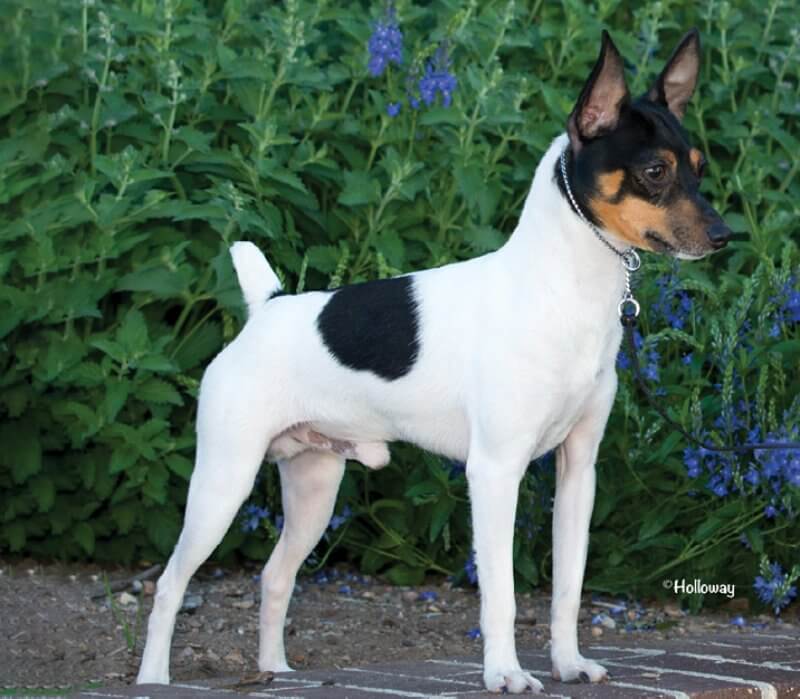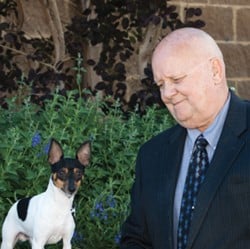Most of my adult life, other then dogs, has been spent as a teacher. In that time I have learned that you can’t save everyone. I also learned that sometimes, if you plant a couple of seeds or create a challenge, you can win some of the battles.
I’m not going to explain everything in the Breed Standard in this writing. That is your job, your responsibility, and your challenge. That is, if you want to be considered a respected judge of Toy Fox Terriers (TFT). I will try to plant seeds and challenge you. I will give you tips and thoughts on the process, to help you sort out this delightful breed.
STORIES
A judge once told me that if he could recognize a breed, then it had all the type it needed. However true that comment is in a simplistic way, it’s not the core knowledge you want adjudicating the National Specialty. All too often we see in the rare breeds generic judging where “flash and dash” or “best down and back” wins. Big wins bestowed on dogs with no type while the one with type walks.
I have also heard breeders of other breeds say, “We have a couple of types in our breed.” My only question as a judge should be which one more closely matches the Standard? There is a big difference in eliminating dogs with faults (negative judging) and rewarding dogs with attributes and breed hallmarks that match the Standard (positive judging).
At the end of the day, fault judging can’t be as much fun as looking for the unique characteristics that make them different than breeds of similar type.
Another story. An elderly lady breeder I knew decided to go for her judging license. She picked the breeds she wanted, back when you could do that. She confessed to me that she knew the breeds and what she liked, but she didn’t know the Standards or if what she liked was correct. She wanted to do right and not look like a foolish old lady, so she made flash cards with the breeds on one side and a sentence from the Standards on the other side. She would mix them all up, Standard quotes side up.
Then she began building her breeds, putting parts of a Standard under the breed she thought it belonged to. She tried visualizing it in her mind’s eye as she went. She then turned them all over to see which were under the wrong breed. That became her challenge; to see and understand why it went to the breed it belonged to. She ended up getting 100s on breed tests, could sort out large classes, judge in the positive mode, and write critiques that commanded respect. I miss her.
THOUGHTS AND TIPS ON JUDGING TFTS
Assemble your class. Look hard at their profile. The TFT is an athletic dog and should look like one. The Standard calls for a totally balanced dog. Balance is mentioned five times in the Standard. There are clues to show you the balance from a glance. They’re called the “four equals” and they define the profile.
- The length of muzzle is equal to the length of backskull.
- The total length of head is equal to the length of neck.
- The height measured at the withers is equal to length measured from point of shoulder to buttocks.
- The body measured from withers to elbows is equal to the distance from elbows to the floor.
The profile should denote squareness, balance, and a definite athletic apearence.
Size can range from 8.5 to 11.5 inches, which allows for a considerable difference in size. However, look for the same qualities: an athletic apearence displaying grace and agility in equal measure with strength and stamina. You should see this in all sizes, smallest to the largest. Our present-day urban society doesn’t require our dogs to routinely rid vermin or Sporting dogs to put food on the table. However, we still want the form which comes from that function. A tip when you look at your line-up is to think form follows funtion, and think which ones could do the intended function.
WALK THE LINE
Now, walk the line and look at the unique, elegant heads, one of the breed’s hallmarks that separates it from other breeds. Observe the gradual, tapering, wedge-shaped head. The alert expression is full of interest and intelligence. The expression shows the terrier influence. The wedge shape is soft but never round-headed or apple-headed.
The ears that contribute so much to the look are set high on the head; not coming off the side. They are erect, pointed, and an inverted V-shaped showing the Fox Terrier and Manchester influence but not the Chihuahua’s in head type.
ON THE TABLE
It’s time to go to the table to confirm what you have seen on the floor. This is a short-coated breed with nothing to hide. Check for bite, remembering full dentition is preferred but missing teeth are not to be faulted as long as the bite is scissors. Check coat texture, testicles, and muscle. The Standard calls for a muscular body with a smooth, elegant outline. This can all be done with the lightest of touches. TFTs don’t like the unnecessary massages and maulings so often seen. Verify on the table, judge on the floor.
Color comes in four varieties with white being basic to all of them. The body must be over 50 percent white or all white. Spots on the body match the main color of the head. Combinations are:
- White, Black & Tan Tricolor;
- White, Chocolate & Tan Tricolor;
- White and Tan;
- White and Black.
Blazes on heads cannot extend into eyes or ears, which would be a DQ.
TIME TO MOVE
An athletic dog capable of going to ground and chasing vermin, the TFT has to move with freedom and carriage to carry out the task, not hackneyed or stilted, with good reach and drive, and the ability to turn on a dime or jump over a Toy Poodle friend in full stride. Coming and going, look for double tracking with a slight convergence at a trot; a smooth, graceful stride, not labored in any way. Head and tail are carried erect in a true terrier fashion. The topline should always be straight and level, standing and in motion.
MAKING YOUR PLACEMENTS
As you look at the class again, it’s time to reflect on which ones have the hallmarks of the breed. If the choice is hard, think which one you would take home to rid the vermin from your barn.
CHALLENGE
If you have read my ramblings to this point, thank you for your time. I hope in some small way that it has helped or maybe given you some things to ponder.
The ATFTC has done a great job with their Standard. It is clear and concise. On their website they have a wonderful Illustrated Standard.
My last challenge is to spend a little time to understand the Standard. Then ask yourself why you can’t be a star judging TFTs. The breed needs your efforts.










